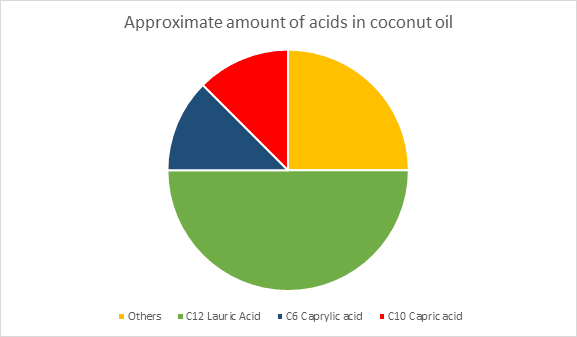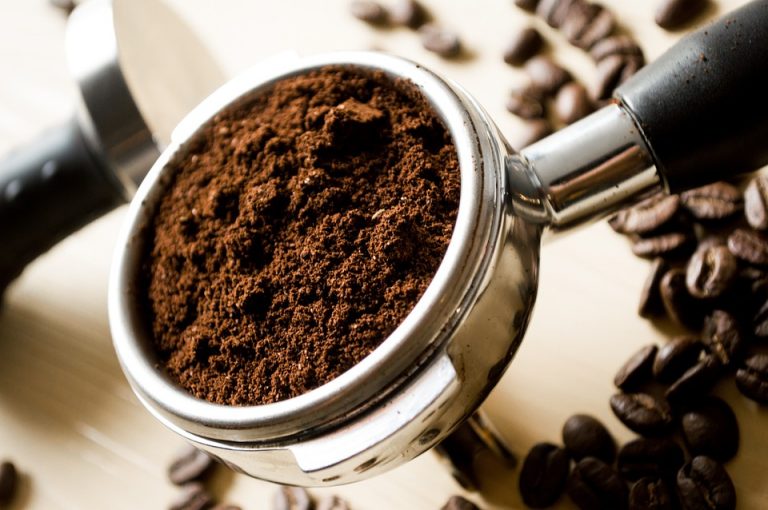Bulletproof coffee is a morning beverage which, thanks to its contents, should supply us with a bunch of positive effects, such as morning energy, increased concentration and brain function, as well as settling our hunger for a few hours.
What is bulletproof coffee?
This mixture is highly caloric (for a drink) and contains between 300 up to even 500 calories. Thanks to this, it will satisfy our hunger in the morning. A bulletproof coffee can be dedicated for people who have a huge problem with eating a more substantial meal in the morning. The burst of energy is provided by the medium chain fatty acids, so called MCT oil.
What does bulletproof coffee contain?
The main ingredient of a bulletproof coffee is, in fact, MCT oil. Thanks to its structure based on medium chain fatty acids, which are not metabolized by the liver, but go straight to mitochondria where they are used to produce cell energy. To increase the effectiveness of the energy production, there is one key factor - medium levels of glucose in blood. In conclusion, the most appropriate time to consume a bulletproof coffee is in place of the first meal of our day.
Benefits of bulletproof coffee
It’s worth mentioning, that fatty acids are also functioning as a transport for coffee, thanks to which it’s more effectively transported to the brain. An effective dose of caffeine (over 100 mg) will ensure stimulation and clarity of mind for a few hours. The standard dose of caffeine in coffee is 380-650 mg/l, which means that drinking 250-300ml of coffee (around 15-20g) we ensure a “good start” to our morning.
How to make a bulletproof coffee correctly
We need:
>> Preferably a freshly grounded coffee
This coffee is then healthier, more aromatic and goes through less processing. It’s best to buy coffee means and ground it at home, cost of a coffee grinder is around 30 PLN (£6, $7.50), but you can just as well use a blender or a reusable pepper grinder.
>> Home-made butter, or from organic farms
Healthy, lacking the unnatural chemical processing, butter has a few day expiration date, so how is it possible that a store-bought butter doesn’t smell 2 weeks after buying it, and is still ready to be used? It’s preservatives! Beware of them, eat as little of processed products as possible.
>> MCT oil
We mentioned it above.
An additionally necessary tool to brew the coffee will be a paper filter!
Why do we need a filter to prepare bulletproof coffee?
Consuming a coffee rich in fat is often suspected of raising bad cholesterol (LDL) level.
Interestingly, it’s not the fat from the butter that contributes to this, but the fatty acids from the coffee! Experiments that were carried out 15 years ago show benefits from using a coffee filter when brewing a coffee. The components that increase the cholesterol levels contained in the coffee beans do not reach the beverage through the filters!
http://www.ncbi.nlm.nih.gov/pubmed/2029499
How to prepare bulletproof coffee
Brew 15-20 grams of grounded coffee through a paper filter, after getting the beverage (not to the boiling water!) add
15-30 grams of fresh butter, mix the coffee until the ingredient dissolves and add
5-15 ml of MCT oil (important – start with a lower amount)
This coffee will ensure a burst of energy and will alleviate rising LDL level.
It’s worth mentioning here not to use coconut oil for this purpose.
Coconut oil contains lauric acid (around half of the fatty acid composition) as well as caprylic and capric acids. Importantly, according to chemical division, lauric acid belongs to MCT acids, however in the biological aspects, it behaves like LCT (long chain fatty acids). This is why the metabolization process of lauric acid is through the liver, which doesn’t result in sudden bursts of energy.

Remember that medium chain fatty acids (MCT) are made out of a specific amount of carbon atoms. When it comes to stimulating and energising effects of bulletproof coffee, it’s carried by fatty acids – capric and caprylic. They are the ones that cause the sudden burst of energy, as they only need 3 alternations to create ATP (energy). For example, sugar food (so called fast energy carrier) needs as many as 26 alternations to create ATP!






